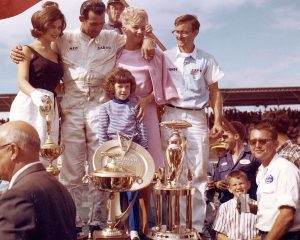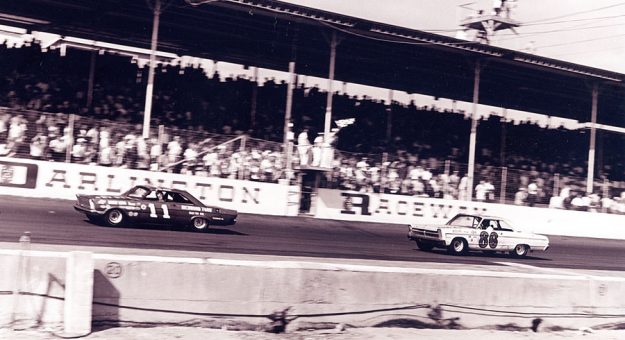Editor’s Note: NASCAR is celebrating its 75th anniversary in 2023. SPEED SPORT was founded in 1934 and was already on its way to becoming America’s Motorsports Authority when NASCAR was formed. As a result, we will bring you Part 18 of a 75-part series on the history of NASCAR as told in the pages of National Speed Sport News and SPEED SPORT Magazine.
With Chrysler factory support gone, Plymouth-faithful Richard Petty was left without a ride.
In 1964, Petty rocketed to the top of the standings with nine victories in his electric blue No. 43 Belvedere, but as the 1965 Speedweeks began he was weighing his options between road racing and drag racing.
While he received many invitations to drive for Ford Motor Co.-backed Grand National teams, he remained faithful to Chrysler and entered a 1965 Plymouth Barracuda in drag racing competition.
Petty did return to Grand National competition in 1965 when NASCAR and the United States Auto Club, the other major race sanctioning body, agreed upon one set of rules effective in June.
The revised guidelines set a minimum weight for cars and OK’d hemi engines in the 1965 Plymouth Fury and the Dodge 880 and Polara on tracks over one mile in length. Chrysler’s controversial powerplant gained clearance on tracks shorter than one mile in the Plymouth Belvedere and the Dodge Coronet.
With this news the defending champion climbed out of his drag racer and into a Plymouth Fury for four victories (Plymouth’s season total) in 14 starts in 1965.

Jarrett, Hutcherson Find Success With Petty Out
With Petty out of action for most of the season, 1964 points runner-up Ned Jarrett raced his No. 11 Ford back to the top of the Grand National division. The 1961 champion captured a division-high 13 races and 45 top-10 finishes, which highlighted a year in which Ford won 48 of 55 races, including a never-equaled streak of 32 in a row from Feb. 12 through July 25.
Jarrett was also the leading money earner for the campaign, picking up $93,624.
With nine victories in 52 starts, Dick Hutcherson finished second in the standings.
Ford-convert Junior Johnson added 13 races to Ford’s incredible tally in only 36 starts. Although he started 18 fewer races than Jarrett, Johnson led more laps (3,998-2,244) and more races (30-29) than the champion. The chicken farmer from North Carolina started from the pole 10 times en route to a 12th-place finish in the points.
Bobby Allison and Rene Charland repeated as modified and sportsman champion, respectively.
In 1965 NASCAR made inner tires mandatory first, on the right tires of all cars racing on superspeedways and later, on both sides of cars racing at every track.
